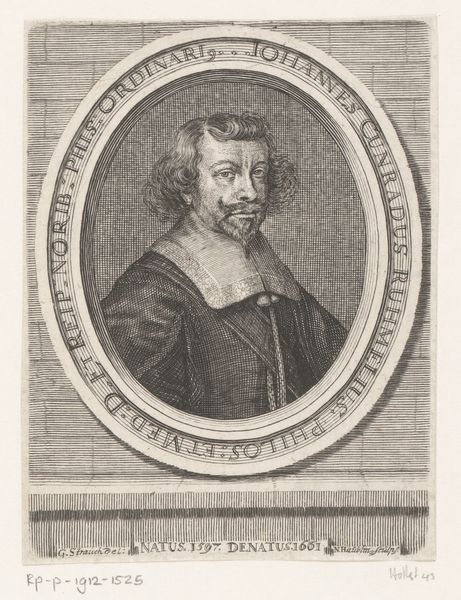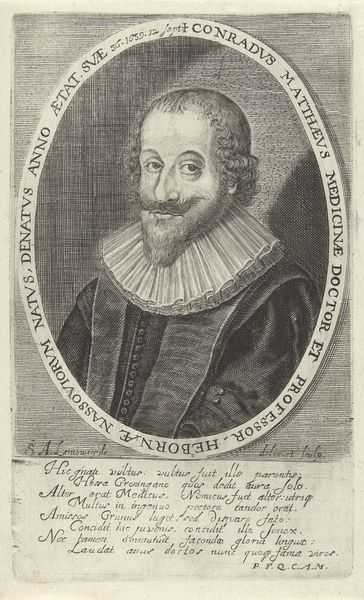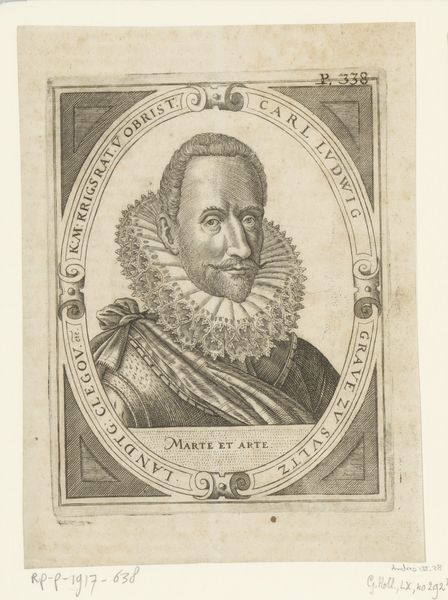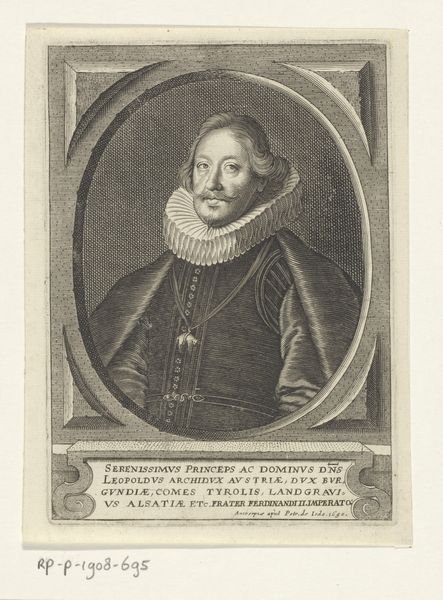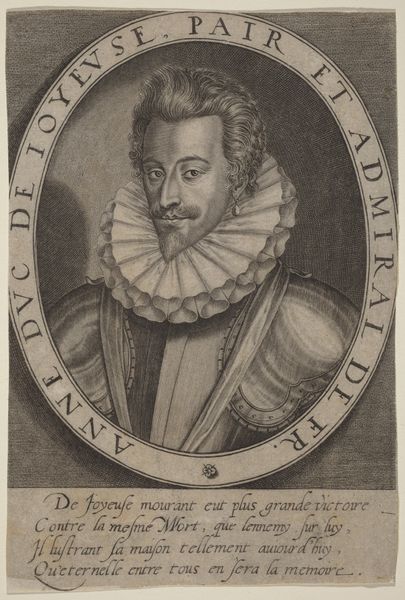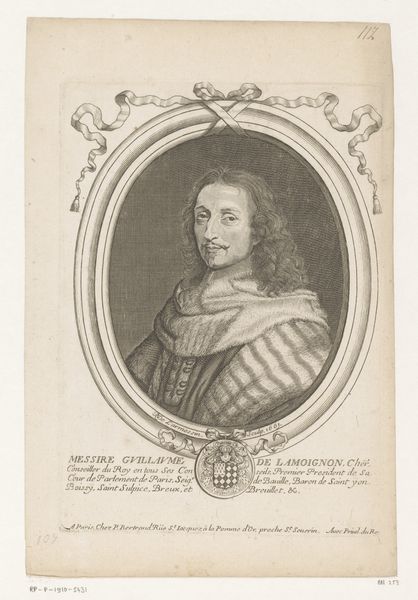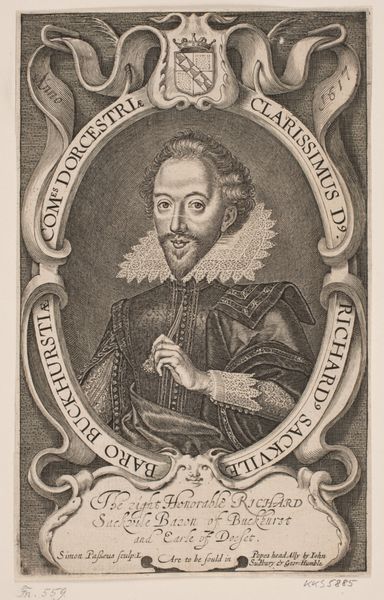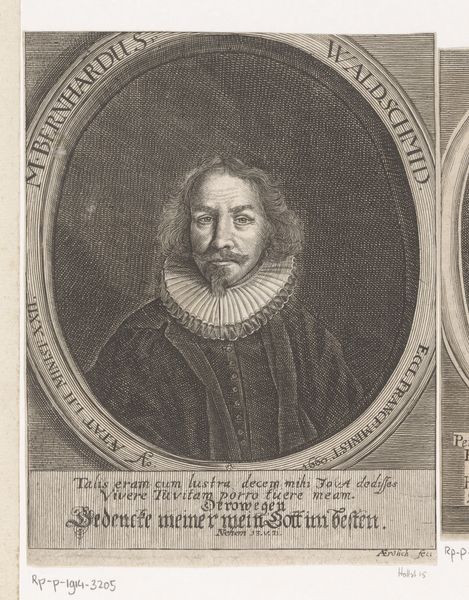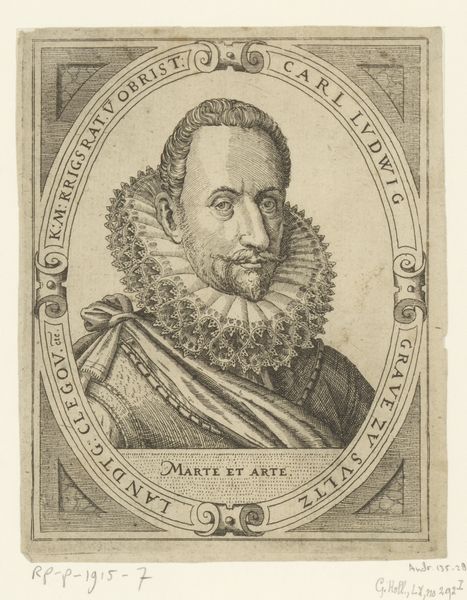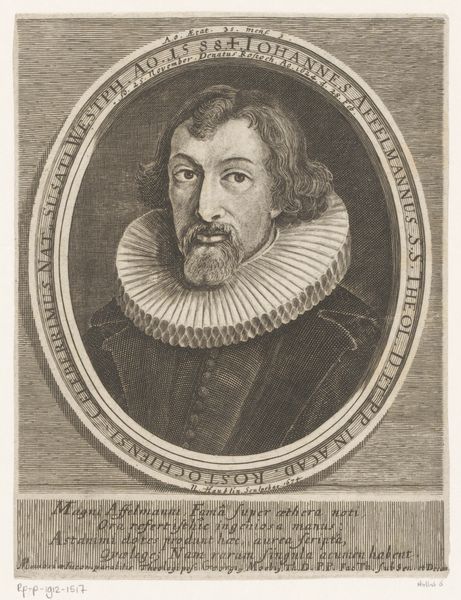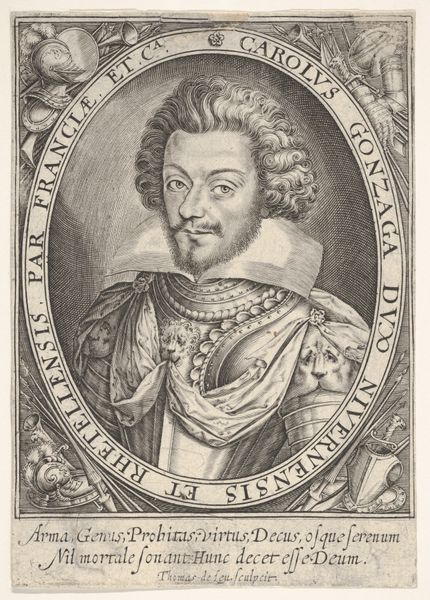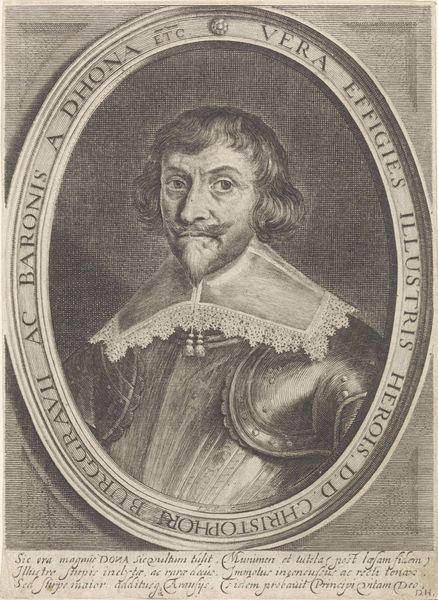
engraving
#
portrait
#
baroque
#
old engraving style
#
caricature
#
history-painting
#
engraving
Dimensions: height 254 mm, width 182 mm
Copyright: Rijks Museum: Open Domain
Curator: Here we have an engraving entitled "Portret van Pierre d'Avity op 45-jarige leeftijd" (Portrait of Pierre d'Avity at Age 45), crafted sometime between 1637 and 1660 by Jean Picart. It is an image that encapsulates so much of its time. Editor: Immediately striking, beyond the ruffled collar, is the texture of everything— the stippled background, the hatching of the armor. You can almost feel the coolness of the metal, the stiffness of the linen. How was this level of detail achieved via engraving? Curator: The Baroque style favored intricate detailing and a sense of drama, visible here in the sitter's direct gaze and meticulously rendered clothing. Pierre d'Avity, was 'ordinarie de la chambre du roy', the king's chamberlain, and it feels significant. Note how his status is also textualized: text is woven into the picture’s frame itself, a continuous affirmation of rank. Editor: That the text encircles him speaks volumes. And look at how the materials amplify his rank! Consider the labour: hours spent etching the copper plate, the specialized knowledge of inks and printing. These engravings circulated widely; each print became a tool to reinforce social order through portraiture. Was each copy equally precise and how were any variations dealt with? Curator: Exactly. Portraits served as symbolic representations of power and prestige, circulating idealized images of nobility and reinforcing their positions within the social hierarchy. Pierre d'Avity’s piercing gaze certainly projects an air of confidence, indicative of his societal role. Notice the choice of ornamentation, mustache and beard – all markers of distinction. It's a careful articulation of masculinity and class. Editor: So much importance rests on the material reproduction and its dispersal! And each piece relies upon not only a person worthy of recognition but artisans able to translate status and significance through laborious printmaking processes. How different would our image of this man, of this era, be without the engraver’s contribution? Curator: That’s key – the success of the Baroque aesthetic relied on the craftsman. I'd add that it all funnels back to d'Avity and the symbolism of the Baroque court that Picart sought to embed and transmit in these portraits. Editor: Precisely, seeing this artwork through its means of production shows how it embodies social messages, class structures, labor practices of the seventeenth century. It reveals much of the economics and structures of power through a single artifact! Curator: And through his depiction, the portrait reveals the cultural ambitions of the era through carefully chosen signifiers. Editor: The material making carries that symbolic meaning far beyond just a likeness.
Comments
No comments
Be the first to comment and join the conversation on the ultimate creative platform.
